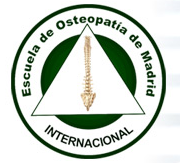Shorter tuberculosis treatment regimens will reduce cost for patients, families
Shorter tuberculosis treatment regimens will reduce the out-of-pocket expenses incurred by both patients and their family members, who often act as the patients' guardians. In addition, shorter TB regimens may allow an earlier return to productive activities for patients and their families.
These conclusions come from an international alliance of researchers, led by the Liverpool School of Tropical Medicine (LSTM), who carried out a comparative study in Tanzania and Bangladesh looking at the out-of-pocket costs incurred by TB patients in both countries. These patients were taking the currently recommended six month TB treatment regimen. The outcomes of this study have been published in this month's International Journal of Tuberculosis and Lung Disease.
The main objective of the study was to quantify the potential savings of a 4 month regimen to patients. This is because a number of new drugs in the current development pipeline have the potential to shorten standard first-line TB therapy from 6 months to 4 months. When these drugs become available, national health programs will have to make decisions about whether it is worth purchasing these drugs, so it is important to understand the potential benefits to patients.
Previous studies have looked at the cost of the currently available, effective treatment regimens for TB, none of which is shorter than 6 months, but have mainly focused on the costs incurred by the health system, not the patient themselves. "This study goes even further," says Health Economist Elena Gospodarevskaya of LSTM and the first author. "We have been looking at the cost for the family of the patient, taking into account loss of earnings for the family member taking the patient to appointments or staying at home to nurse them. Determining the exact magnitude of likely savings of a 4-month regimen is not straightforward, but a shorter regimen would certainly reduce the out-of-pocket travel expenses incurred by patients in the last 2 months of treatment and allow an earlier return to productive activities."
Researchers from six different organizations looked at TB patients in two settings, with the final sample being 94 patients from Tanzania and 96 from Bangladesh. Most patients were interviewed during months four and six and were asked to recall their costs incurred during the initial two months of treatment, also known as the intensive phase, separately from those incurred in the two months before the interview, known as the continuation phase. Lost productivity was calculated as income lost due to TB for the patients and their guardians who would otherwise be in paid employment. All costs were considered alongside loss of earnings from travel to appointments or to collect medicines as well as the costs of hospitalization and food supplements.
Overall the total costs per patient in the most recent two months of the continuation phase was about half the cost per patient in the first two months, but it still constituted 77% of 2-month national income per capita in Tanzania and 89% of 2-month national income per capita in Bangladesh. "These are significant costs for patients and their caregivers," said William Wells, formerly of the TB Alliance.
Previous studies have found that the cost to patients of anti-tuberculosis treatment is high, often bench-marked as catastrophic, i.e. more than 10% of the annual household income. "Decisions on regimen changes are often made on the basis of cost to the health system, while patient perspectives are rarely a factor in decision making. We argue that any savings to patients which have the potential to reduce the number of TB patients incurring catastrophic costs is vitally important. The new WHO TB Strategy, which was approved at the World Health Assembly last month, includes a target that by 2030 no patients or their families will incur catastrophic costs as a result of TB," says LSTM Professor Bertie Squire, who led the study.
Story Source:
The above story is based on materials provided by Liverpool School of Tropical Medicine. Note: Materials may be edited for content and length.
Journal Reference:
- E. Gospodarevskaya, O. Tulloch, C. Bunga, S. Ferdous, A. Jonas, S. Islam, M. Rahman, M. A. Hussain, M. N. Haque, S. Egwaga, E. Gardiner, G. PrayGod, M. A. Islam, G. H. Mann, W. A. Wells, S. B. Squire. Patient costs during tuberculosis treatment in Bangladesh and Tanzania: the potential of shorter regimens.The International Journal of Tuberculosis and Lung Disease, 2014; 18 (7): 810 DOI:10.5588/ijtld.13.0391
SD










 Master PCMH Criteria with Upcoming Webinars
Master PCMH Criteria with Upcoming Webinars







 The American Osteopathic Association (AOA) is the representative organization for the over 70,000 osteopathic physicians (DOs) and 18,000 osteopathic medical students in the United States. The organization promotes public health, encourages scientific research, serves as the primary certifying body...
The American Osteopathic Association (AOA) is the representative organization for the over 70,000 osteopathic physicians (DOs) and 18,000 osteopathic medical students in the United States. The organization promotes public health, encourages scientific research, serves as the primary certifying body...










 12:01
12:01
 Daniel Enriquez de Guevara
Daniel Enriquez de Guevara













.jpg)


















0 comentarios:
Publicar un comentario